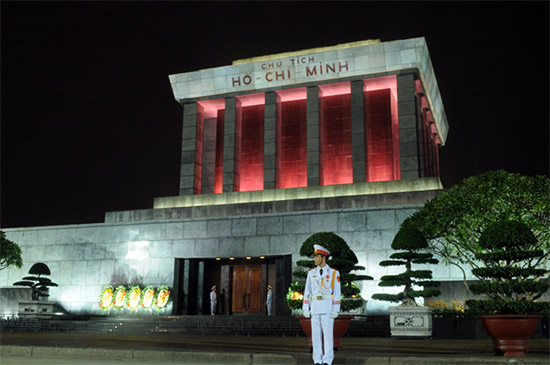The ancient quarter of Ha Noi, which Western tourists usually consider as an old Venice, is still a special small ancient town in the heart of the capital
The ancient quarter of Ha Noi, which Western tourists usually consider as an old Venice, is still a special small ancient town in the heart of the capital. Its popular name is the 36 streets and wards, located in the city centre - Hoan Kiem District in an area of 100 ha. It borders includes Hang Dau in the North, Hang Bong - Hang Gai - Cau Go and Hang Thung in the South, Tran Nhat Duat - Tran Quang Khai streets in the East, and Phung Hung Street in the West.
This place was craft-guild in the past. Each street has its name of goods: Hang Non, Hang Chieu… In the ancient quarter, there are traditional house and regional, historical, cultural construction and food area. The ancient quarter still keeps the architecture of Viet Nam peoples and Asia- make a special architecture group- close houses and busy streets. There are many busy daily activities: living, selling, producing, playing, and relaxing.Festivals make strong vitality for the surviving ands continuous developing of the city.
The old Ha Noi was divided into two areas: the forbidden emperor palace for the King, mandarins, and trading estate for people - that is the ancient quarter. In the past, this ancient quarter is formed from transport line waterway and canal system made by branches of Red River and To Lich River. Skilled artisans chosen by the dynasty to build craft village near the area imperial gates. In the century 16th, this place became a busy city area with separated artisans specialized for one kind of goods. Therefore, until now the city is called Ha Noi 36 streets and wards.Each district name begins with “Hang” like Hang Dao, Hang Bac, Hang Thiec, Hang Giay, Hang Ma, Hang Giay... according to old Vietnamese “Hang” means goods, and the streets named by one kind of goods. Some city areas still sell those traditional goods.
The ancient town is an attractive area for tourists to discovery. The pipe house in this area is narrow and long. To see the depth of them, we can go along alley or visit one of stores on Hang Gai Street. The life is busy nowadays. In the early morning, the streets are crowded: workers, sellers, players… the men work traditional jobs, old lady look after the churches, takes care of grandchildren or sell cigarettes, look after houses… even in the cold nights, Ha Noi people have their habits of gathering, tasting food together. Ha Noi ancient town are facing great and complicated changes oh adapting to developing living, which replace houses and streets to new, modern architecture. However, the ancient town is still full of charming with small, nice, moldy pipe houses with green and sweet fragrance of trees. The ancient town never loses its pure and elegant beauty.

There’s an old vietnam saying, “Hanoi has thirty-six streets and guilds – Jam Street, Sugar Street, Salt Street…”. Inside a modern and dynamic city, there appears an antique quarter, the Hanoi’s Old Quarter – the represented eternal soul of the city. These days, most Vietnamese and Westerners are familiar with the phrase “Hà Nội - Ba mươi sáu phố phường” (translated as “Ha Noi - 36 districts” or “Hanoi – 36 Old Streets”), or “Phố cổ Hà Nội” (translated as “Hanoi’s Old Quarter”), the top special historical vestige and sight-seeing of the capital, luring international visitors thanks to their mostly original state.















0 nhận xét:
Đăng nhận xét